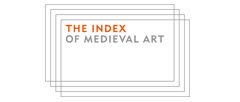ScholarWorks > Arts & Sciences > Medieval Institute Publications > STUDIES_IN_ICONOGRAPHY > Vol. 45 (2024)
Abstract
The manuscript now divided between British Library MS Add. 28162 (28162; Somme le Roi) and Yates Thompson MS 11 (YT11; Traité de la sainte abbaye), contained at least fourteen exquisite full-page miniatures illustrating the two texts; eleven for the Somme and three for the Traité de la sainte abbaye. Its opulence derives in part from its elaborate architectural borders that depict the most up-to-date building fashions. These borders are part of a widespread interest in complex architectural frames, most typically exemplified by the Saint Louis Psalter (BNF MS lat. 10525). However, unlike the Saint Louis Psalter and the closely related Queen Isabella Psalter (Fitzwilliam Museum MS 300), the architectural frames of the British Library Somme take a wide variety of forms over the course of the manuscript and often interact directly with the images they contain. I suggest that while the use of templates or patterns was likely in all cases, that the artists of the British Library Somme treated their templates as a series of interlocking parts that they altered in direct relationship to the central image. Consequently, I argue that frame and image were mutually informing, with the narrative using the architecture to amplify its meaning. The frame operates less like a stage than like a physical building, the spaces or decoration of which might be exploited as relevant to enhance a performance. Ultimately, this paper demonstrates how the use of technologies and tools can result in different artistic outcomes.
Recommended Citation
Hutterer, Maile
(2024)
"Templates and the Production of Architectural Frames in Some French Manuscripts of the Thirteenth and Fourteenth Centuries,"
Studies in Iconography: Vol. 45, Article 3.
Available at:
https://scholarworks.wmich.edu/studies_in_iconography/vol45/iss1/3



